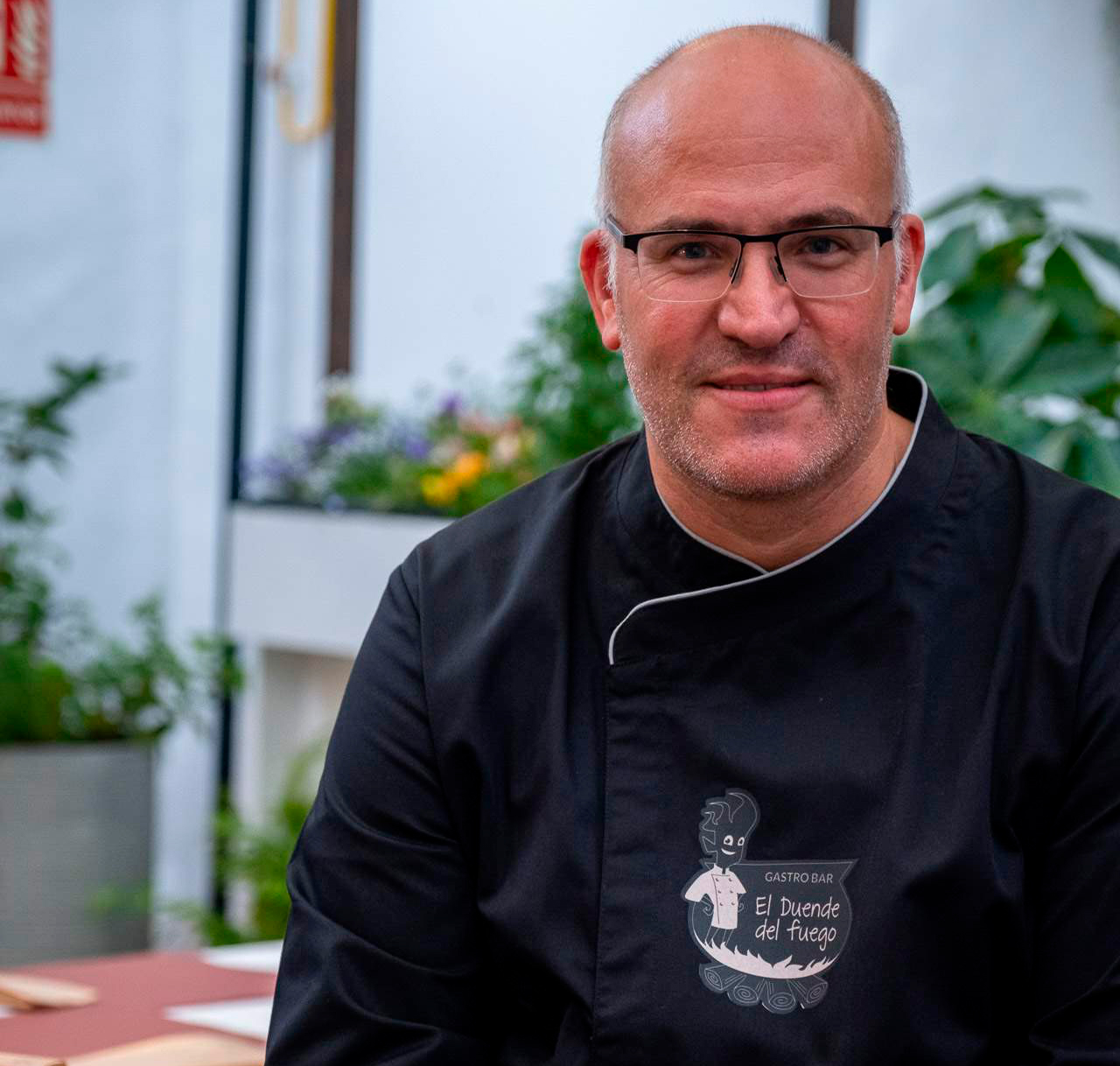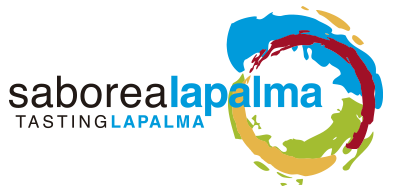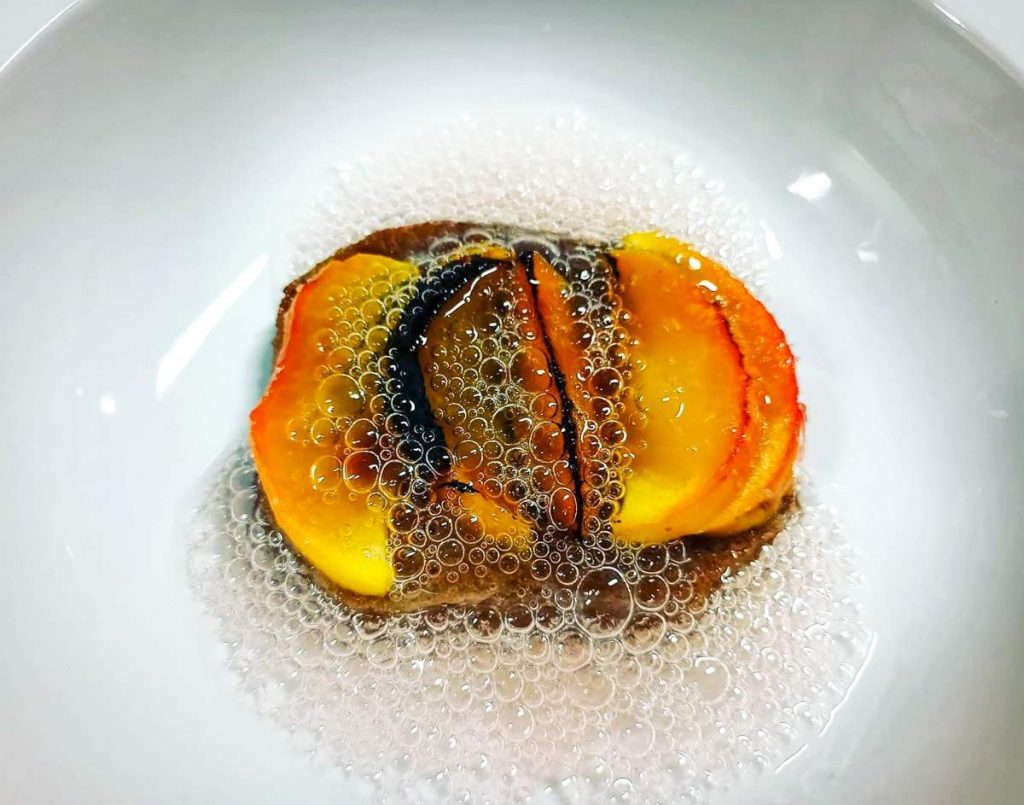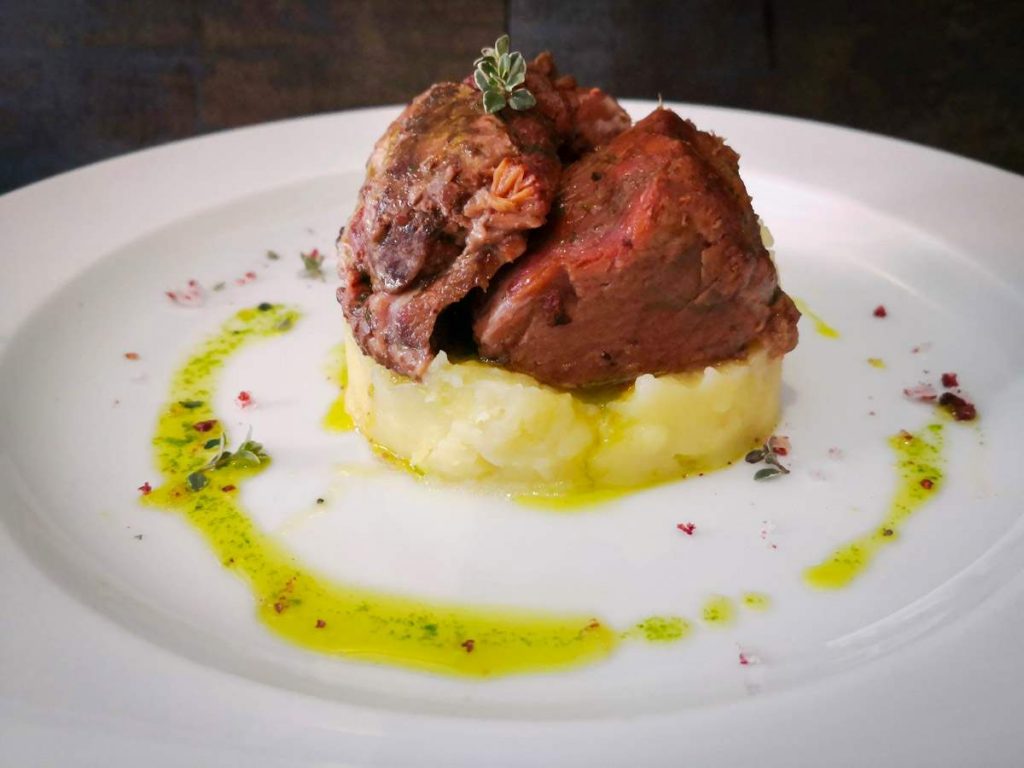
02 Mar El Duende del Fuego, the gastrobar that rescues the flavours of La Palma
Using organic, local and seasonal produce, chef Pedro Hernández explores the origins of the recipes of La Palma using the most avant-garde techniques.
As soon as you enter The Fire GoblinAt Pedro Hernández's gastrobar in Los Llanos de Aridane, you can smell the aroma of freshly baked bread. That bread is the first thing he puts on the table next to a small plate on which he pours some good olive oil. It is the letter of introduction, a declaration of intent, of the gastronomy that is practised in this old house in the Plaza Chica. "Well-made bread is very healthy", says Pedro. The dough is made from the babilla variety of wheat flour, grown on La Palma, which is milled in a stone mill that is over 150 years old. A very careful sourdough and long fermentations are the rest of the secrets. The crunch when you pinch it with your fingers, the spongy texture, the aroma that escapes when you open it; sensations that are like Proust's madeleines to connect us with the days when our grandparents used to prepare bread at home with care.
BACK TO THE ROOTS
After a period working in different kitchens abroad, Pedro decided to return to La Palma, his island. His first space was a two-by-two kitchen. In December 2020, with all the restrictions in place, he decided to expand the restaurant and for this he chose one of the oldest houses in the city, with more than five hundred years old loaded on its beams. From the cramped conditions of that first premises, he learned to buy on a daily basis: if he needs two lettuces, he doesn't buy three. Research is one of the pillars on which the gastronomy offered by El Duende del Fuego is based, the result of all those hours is a fresh, sustainable, creative cuisine, and with special attention to allergens: 95% of its dishes are gluten, lactose and egg free. The produce is almost always organic, local and seasonal. Pedro Hernández was the first chef in the Canary Islands to receive the Kilometre 0 certification in 2017.
GRANDMA'S AVANT-GARDE RECIPES
One of his references is the cuisine of the early Renaissance, where very few ingredients were used and potatoes, says Pedro, tasted like potatoes. He also draws on the classic recipe book of the grandmothers of the palms, interpreting with respect all kinds of roasts, stews and rice dishes, elaborations that go through the most avant-garde techniques. to find the best point for each ingredient and make it as healthy as possible; steaming or vacuum cooking, yes, but no grilling or frying. He also makes the sausages that he serves as an aperitif himself. When asked about the ingredients that go into these sausages, he replies that, basically, time: "I don't accelerate the processes with any kind of additive and I hang them for as long as they need, no less than three months". Time is precisely what he asks of the diner who arrives at one of his tables, the order is prepared on the spot, he works alone in the kitchen and, given the current times, he has only one person in the dining room. But he talks about the island's producers, stockbreeders and farmers, as an inseparable part of the great team that makes the restaurant work.
LOVE FOR CHEESE AND PALMERO WINE
Like a litany, he goes on to name some of the suppliers he works with, naming some of the suppliers he works with. special emphasis on two of La Palma's most popular products: cheese and wine. As a member of the Palmero Cheese Tasting Committee, the cheeses of La Candilera, Los Tumbitos and Luna de Awara are a must on the menu. As for the wines, Tendal from Tijarafe, Viña Etna from Breña Alta or Victoria Torres from Fuencaliente, who makes a sweet malvasia that the guru Robert Parker put among the 100 wines of the year, he says with as much pride as if he himself picked the grapes. His philosophy can be summed up in one sentence: "When buying vegetables we look at size and colour. We buy by weight and by price, but not by taste. I don't ask the grower for the price, he takes care of the price".
FROM LANDSCAPE TO PLATE
His words are certified when he puts a plate of steamed vegetables on the table, absolutely perfect when cooked, with a little grated turmeric and a pinch of salt. Vegetables that tomorrow will be different ones, the ones the market leaves behind. Preparations such as marinated tuna with roasted peppers and garlic vinaigrette will follow; masterly the needle of palm tree beef confit at 60 degrees for three days, a single ingredient to bring out the meat's full potential, just a little mashed potato and raspberry salt to accompany it. La Palma, its landscape, always on the plate. The menu continues with Indian prickly pear risotto with cañizo cheese and pork ribs with caramelised mojo. The yoghurt ice cream with strawberry compote and honey with almonds from the island is simple and surprising.
El Duende del Fuego is not a place for frills or acrobatics, Pedro Hernández defines himself as a gastroarchaeologist of taste who delves into the origins of La Palma's recipes to bring to the table all the aromas and flavours that La Palma has to offer.




